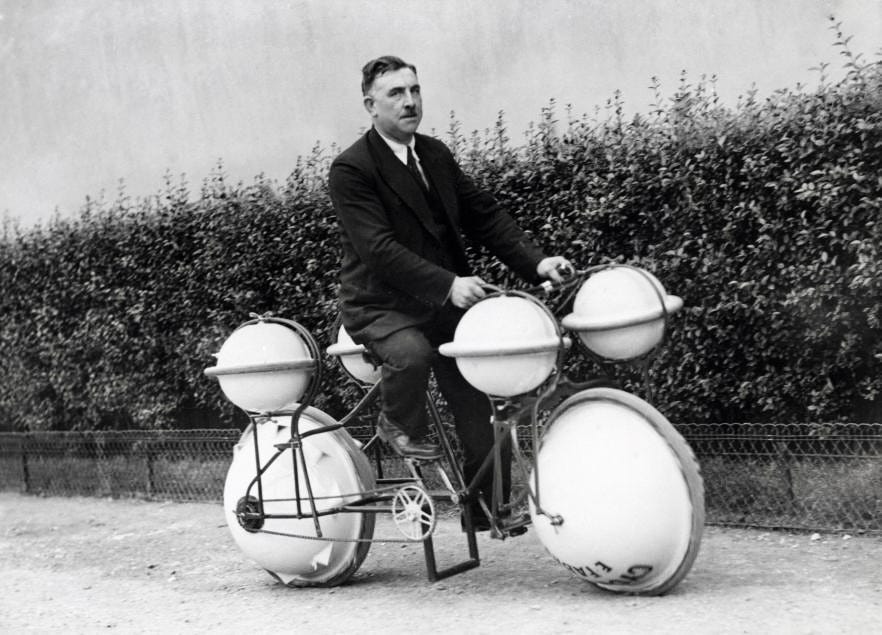
The subject of pedalboats will not die. Just when I’m done with the topic, they worm their way back to the surface, refusing to fade.
I might be an accidental carrier of the pedalboat virus…whose symptoms have been oddly pleasurable. Without intention, I’ve owned three different pedalboats over the decades, going back to the 1990’s when we were custodians of The Wooden Boat Shop retail store in Seattle.
My symptoms go farther back, to an earlier Lake Union Wooden Boat Festival when I first met the grand guru of Seattle’s pedalboat cult, the brilliant, mischievous, lovable and immensely creative Philip Thiel, a retired university professor who refused to drive automobiles and started pedaling on water with his 16’ Dorycycle—a basic Banks Dory with used bicycle pedals, hardware-store pulleys and v-belts leading to a beautiful wooden three-blade propeller.
(text continued below)

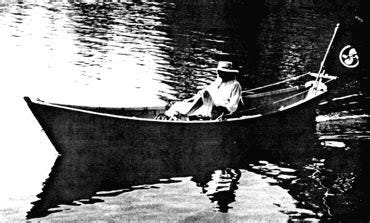
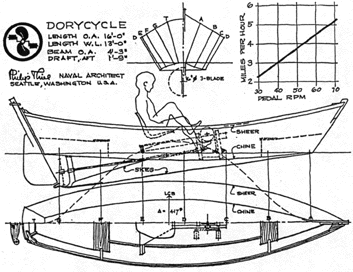

We were honored to work with Phil in the 1990s during our Wooden Boat Shop days, selling plans for his nifty smaller pedalboats and then helping celebrate his first larger canal-cruising craft, the adorable 18’ 6” x 6’ Escargot, which originally was intended for twin Sea-Cycle drives but was more often powered by a small kicker motor. (Phil found that Escargot could be driven to 4 knots with a 2.5 hp outboard.)
Sadly, Phil died ten years ago in Seattle, leaving behind a substantial crowd of good friends, associates and ardent admirers, myself included.
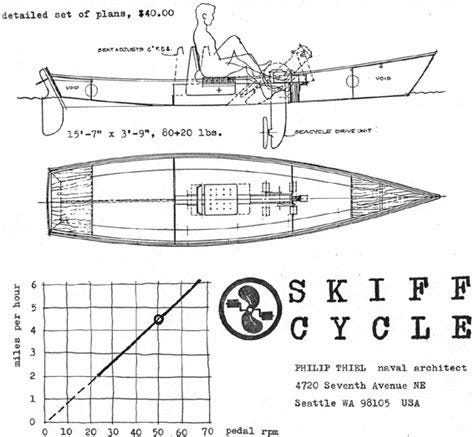
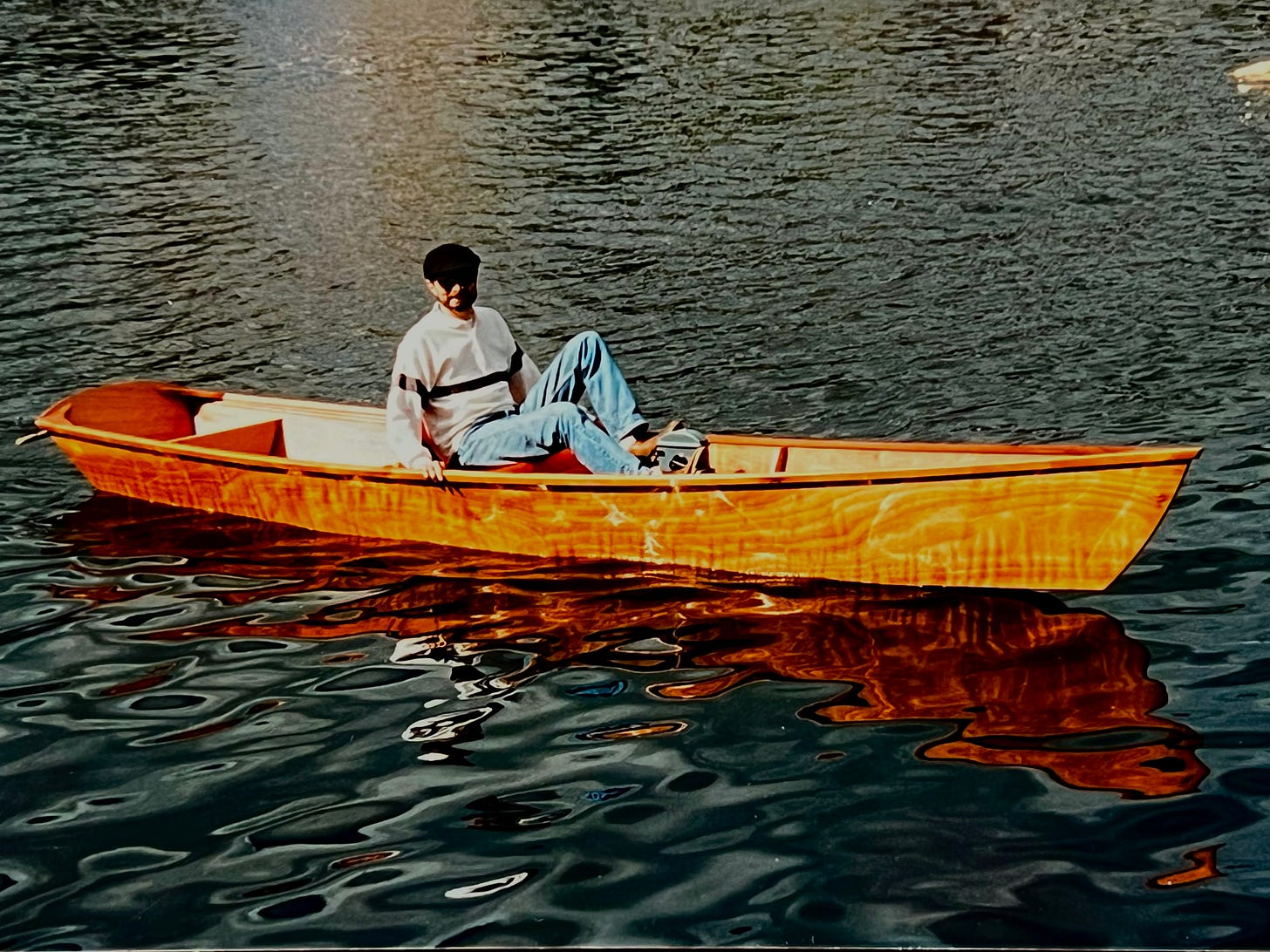
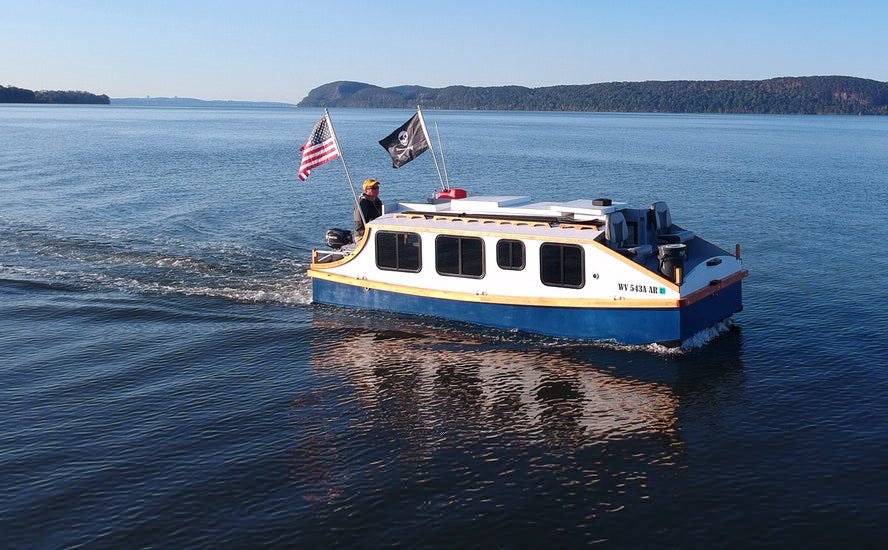
After enjoying ownership of Phil’s original Dorycycle, and then later the lightweight Skiffcycle, I somehow avoided pedalboats until 2015, when adventure racer Roger Mann entered the 750-mile Race to Alaska, registering a 16’ rotomolded Hobie Adventure Island trimaran—a glorified lake toy Roger somehow pedaled and sailed to Southeast Alaska, becoming the first solo finisher of the punishing race. (Roger could have become R2AK’s first fatality after suffering nightmarish hallucinations and pitchpoling exhausted and wet onto a beach just north of Cape Caution, somehow tolerating a long, miserable night. (Roger lost some vital equipment when crashing through 20-foot rollers onto the beach, but he luckily found his Hobie seat the next morning, down the beach and half buried in sand. If he’d lost the seat, along with other critical parts of the boat, I’m not sure how he would have continued…or even survived.)
Having admired Roger before the R2AK, I was a supporter and offered to buy the oh-so-available Adventure Island after he reached Ketchikan. The boat was disassembled and carted back to Port Townsend atop an old van, and I enjoyed sailing (but mostly pedaling) the trimaran for the next few years. (It didn’t impress much as a sailboat, but when removing the akas and amas, getting down to the slender 16’ main hull, it pedaled nicely with its Hobie Mirage Drive.
So, that brings us to this Spring, when good friends decided to convert two nice rowing-boat designs into pedalboats, just to see what the fuss was about.
It all started when Jim Tolpin, woodworker, author and avid rower, bought a new Hobie Mirage Drive and hauled it over to Laughing Turtle Boatshop where he got together with his longtime buddy, Oscar Lind. In so many words, Jim said to Oscar, “Well, here’s a pedal drive. How about building a boat to go with it?” And Oscar, being Oscar, responded with something like “Well, sure, why not? Let’s get started!”
After a bit of research, Oscar selected the Growler design by Warren Jordan of Jordan Wooden Boats, a 15’ x 40” flat-bottomed skiff described as a “transom-sterned sailing canoe,” normally rowed, paddled or sailed with a modest lateen rig…but never before host to a Mirage Drive.
(If you’re interested, go to jordanwoodboats.com to see his designs, including the easily built Growler model.)
Word spread, and once he heard about the latest Jim-and-Oscar project, mutual good friend and boatshop mate Bob Miller—who can’t resist a fetching small-boat project—remembered he had a not-yet-completed 15’ x 45” Herreshoff-John Gardner pulling boat waiting for love behind his Port Townsend garage. As a bonus, the boat had a 17”-wide flat bottom, just begging to have a hole cut for the box that would house a Mirage Drive. So Bob dragged the project boat over to our shop, acquired a Mirage Drive with the optional Turbo fins (that reportedly offer 20% greater speeds), and set about transforming the pulling boat into a pedalcraft.
Both projects were finished recently, allowing us to have a little Pedalboat Palooza at the launch ramp, seeing how each design performed with different Mirage Drive models, rope-tethered rudders, comfortable seats and similar hull lengths…and yet quite different hull designs. (The Growler has a wider flat bottom, and a single plank up each side, while the John Gardner modification of an earlier 17’ Herreshoff pulling boat has a narrower section of flat bottom and an otherwise round lapstrake hull.)
Here’s a shot of both boats, side-by-side, with Jim Tolpin in Bob’s elegant double-ender.
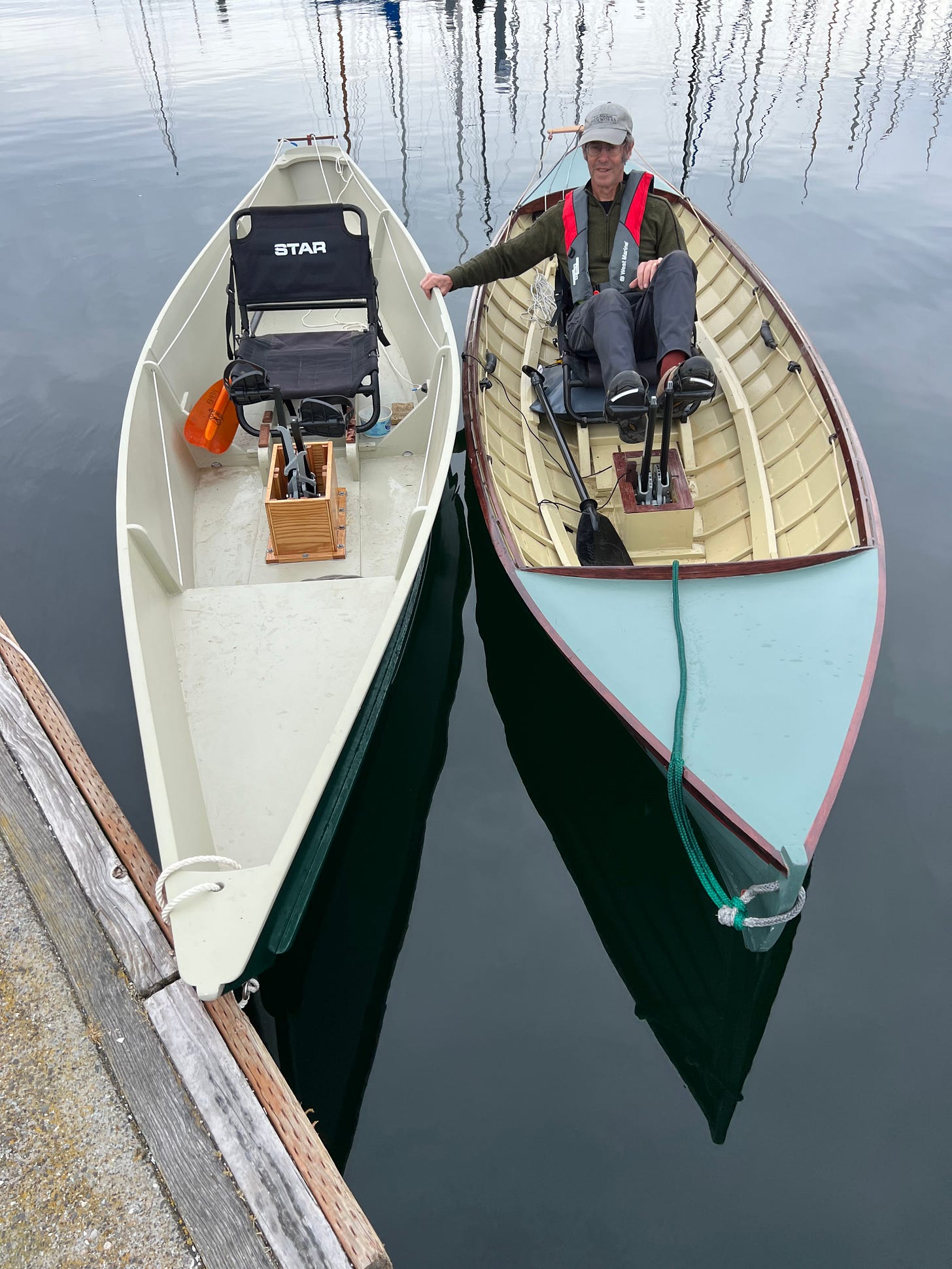
Both boats had similar camping chairs—almost the Barco Loungers of small craft—and similar drop-down rudders, skegs and boxes to house the Mirage Drives. Both reached what we’d call “all-day geezer speeds” of about 2.6 knots, or let’s say 3 or 3.5 knots for younger pedalers who are in shape and maybe doing some on-land bicycling. (I briefly got to 4.3 knots with both boats, but was ready to stroke out at the 50-yard line, preferably with a beer in hand.)
Oscar and Jim’s flat-bottomed skiff had slightly greater stability than Bob’s substantially round-bottomed hull, but both were rock solid once you were aboard and seated.
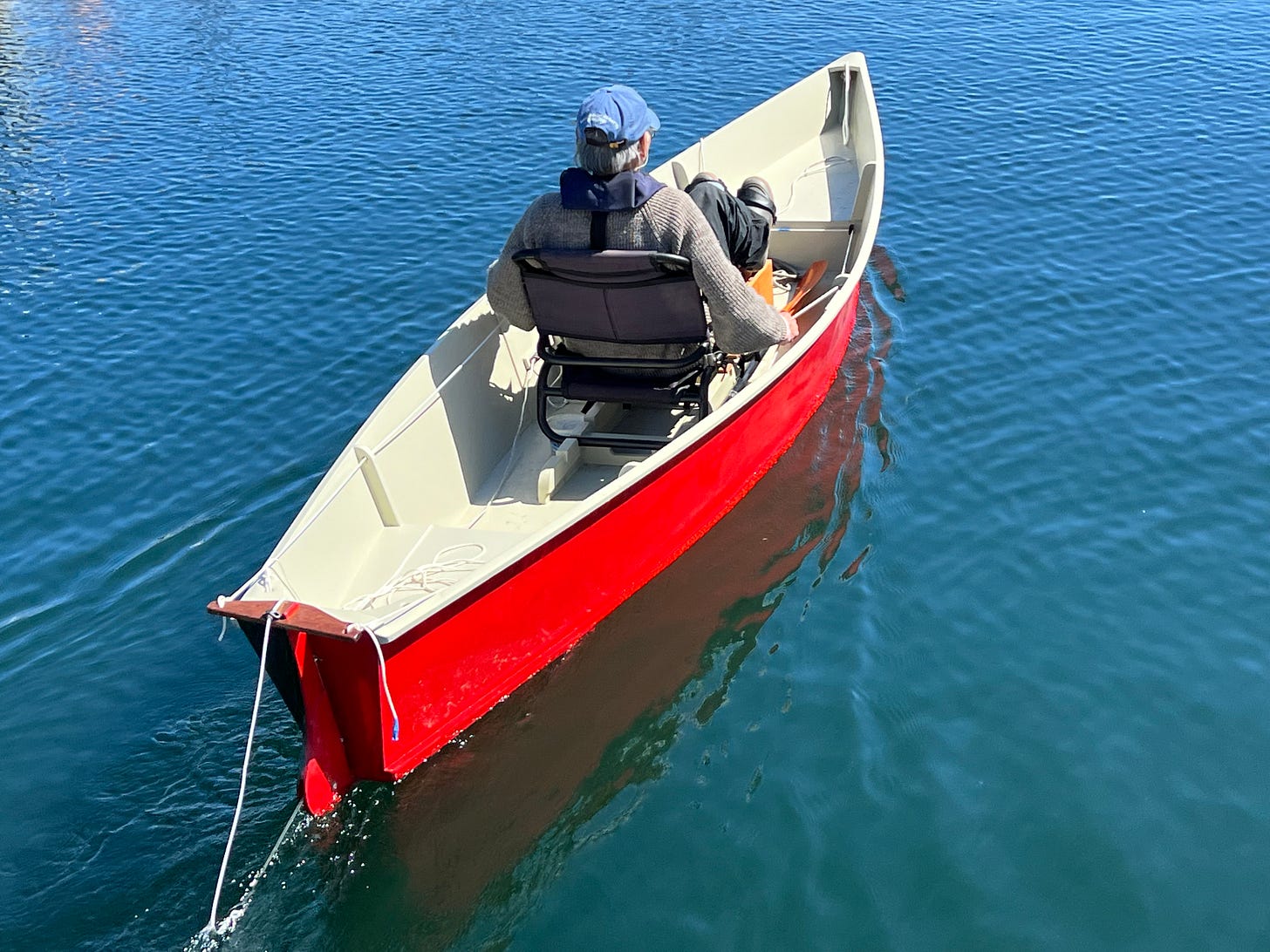
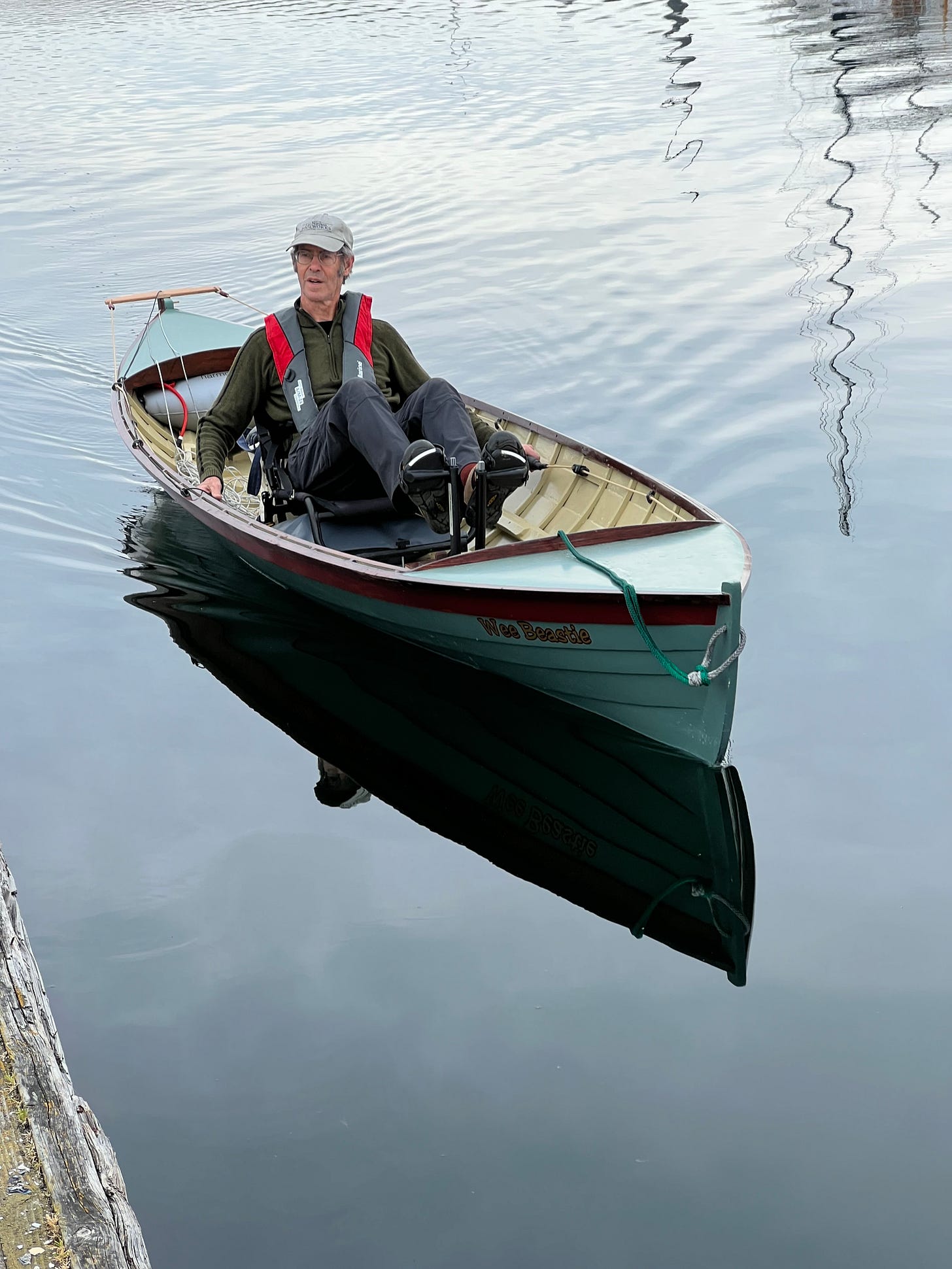
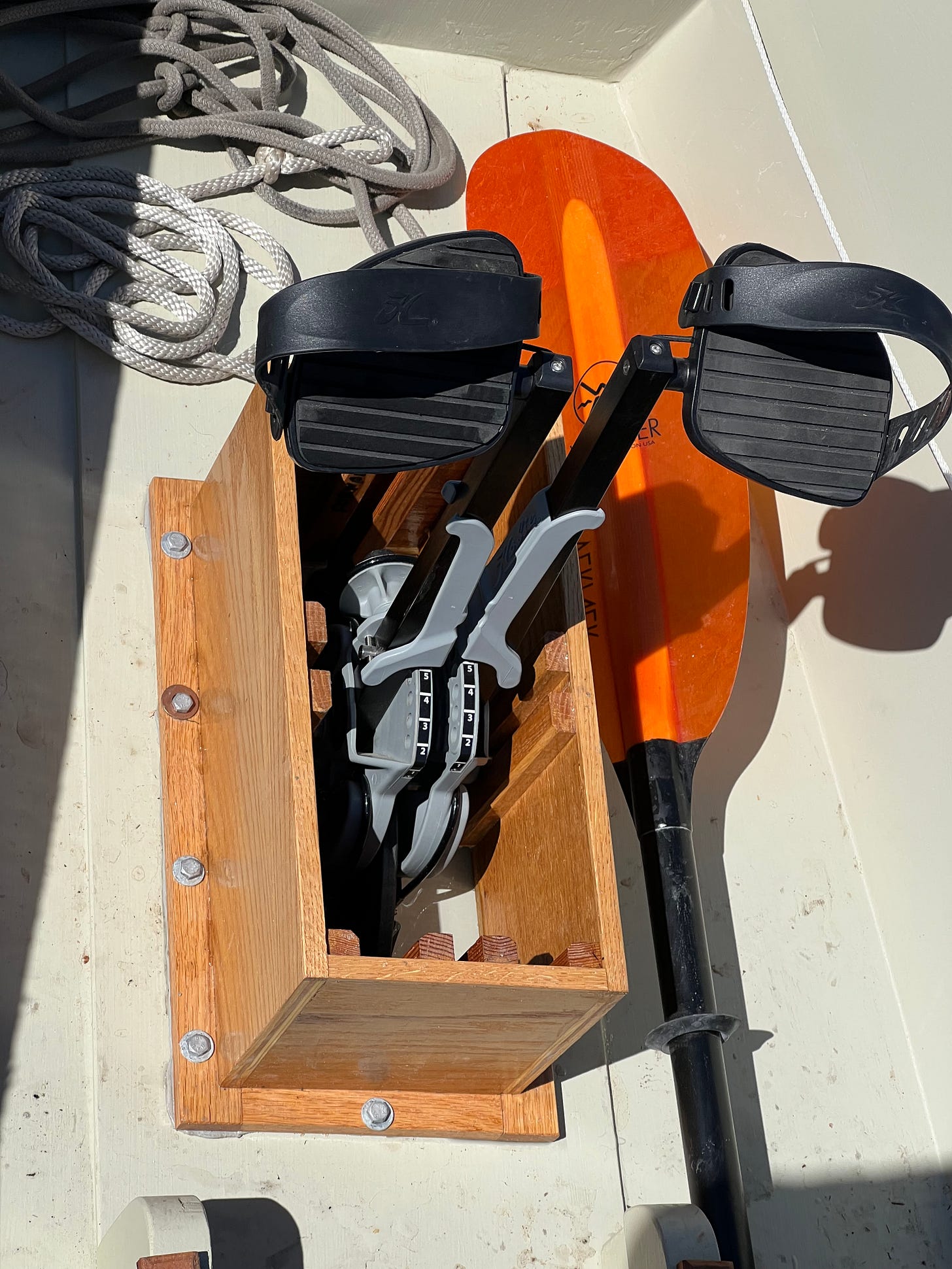
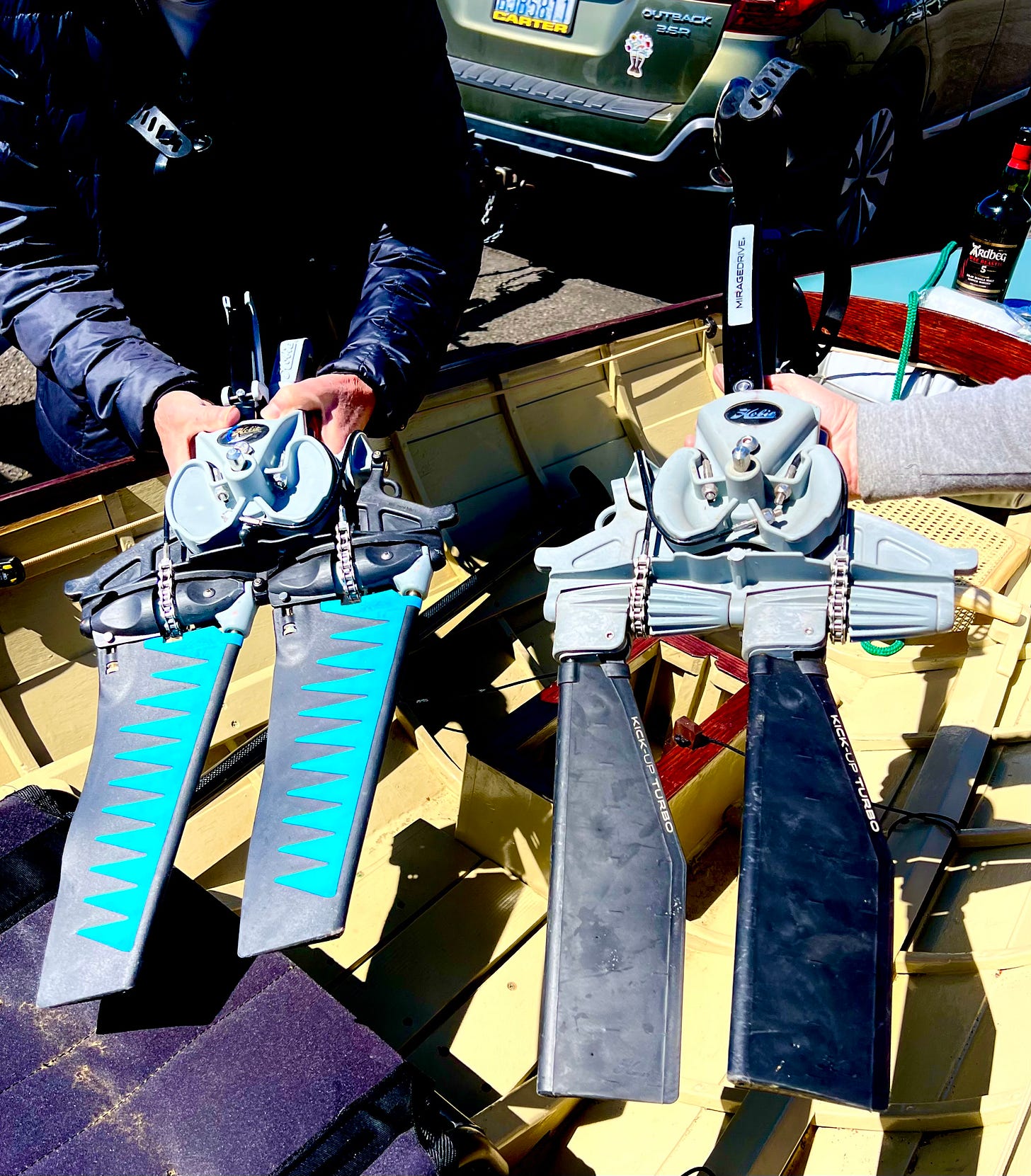
With not much to favor either of the pedalboat hulls, we took both out for a side-by-side test, pedaling each at the same rpm (not really “rpms” with the Mirage Drive—more like fore-and-aft stroke rates). Bob’s boat, with the optional Turbo blades slowly crawled ahead of Jim and Oscar’s hull, with the standard MD unit, but I suspect that if we’d switched drives from boat to boat, the Turbo would have made Jim and Oscar’s boat slightly faster.
So, we had a great time experiencing Hobie’s drives in two easily-driven wooden rowing boats, leaving some of us with an interesting question: Is it possible we might prefer facing forward, pedaling, instead of rowing our various small craft? (While pedaling seems about the same as rowing in terms of hull speed and general efficiency, I won’t soon abandon oars. Pedaling offers a nice view ahead, but to me it’s like being on an exercise bike with a good view.
Many of us have been rowing since childhood and we love how we feel connected to the watery environment with oars; how we work more areas of our aging bodies when rowing, and how rowing allows us to quickly respond to changing wind and water conditions, like waves that come out of nowhere…and how harbor seals seem drawn to the quiet rhythm of our oars, silently swimming behind our transoms to stare, dog-faced, at a boat that is slipping gracefully through their waters. Pedaling is work; rowing is fun…and, okay, some of us are old cranks who resist change.
OTHER PEDALBOATS, OLD AND BRAND NEW…
It turns out that pedal-powered craft have been around forever, and for the most part they’ve been driven by paddlewheels.
The first one we could find was a weird little skiff designed by Leonardo da Vinci. (Yes, that Leonardo. It apparently took two strong mariners pushing on the paddlewheels to get going, but it still deserves pioneer status.)
There were other early inventions, some that might have been successful, before the emergence of modern-day pedalboats.
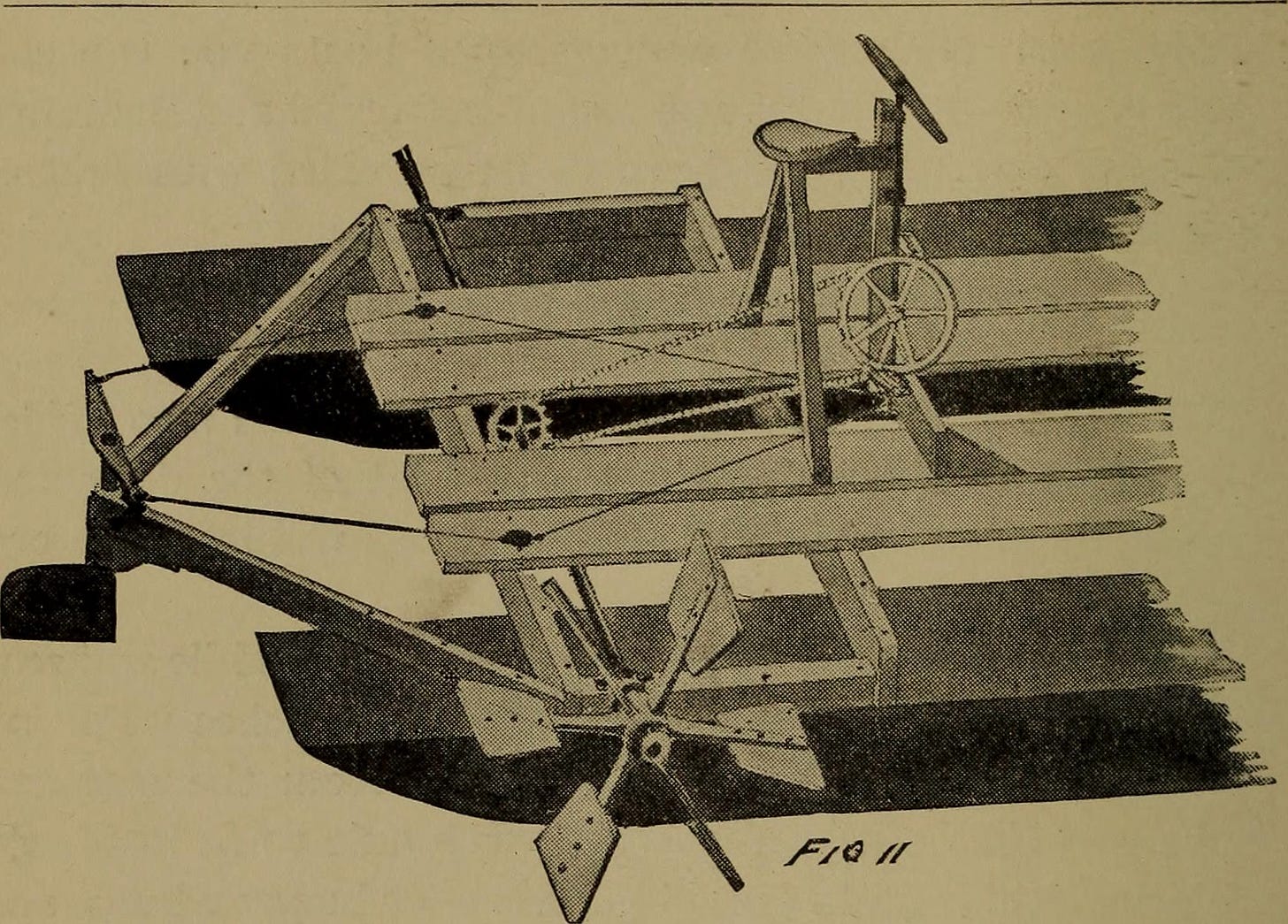
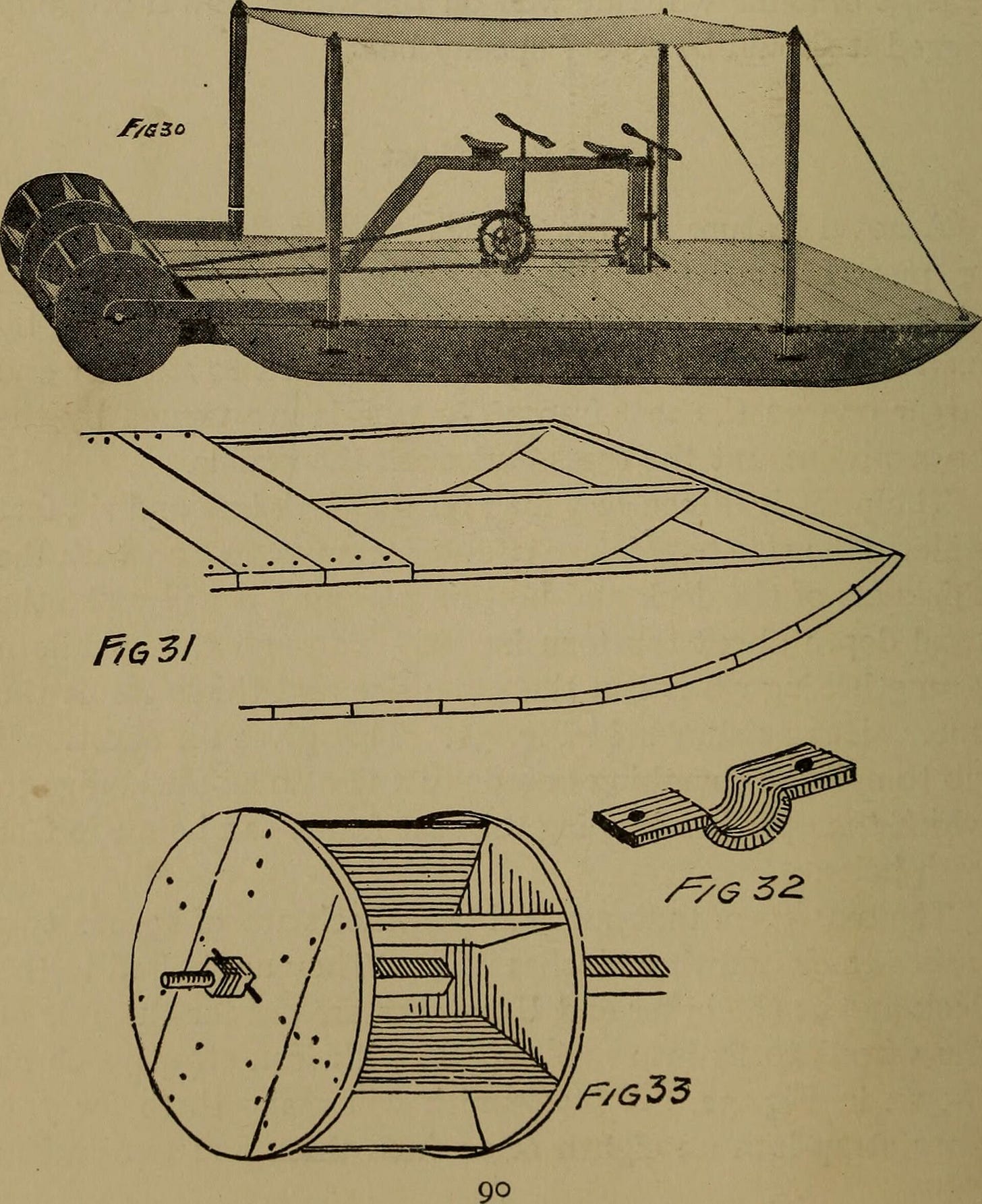
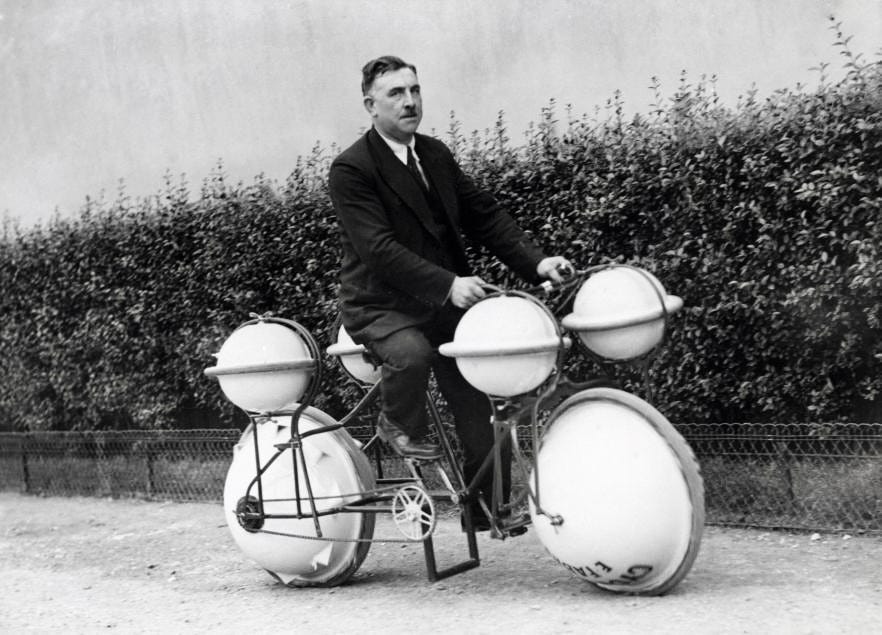
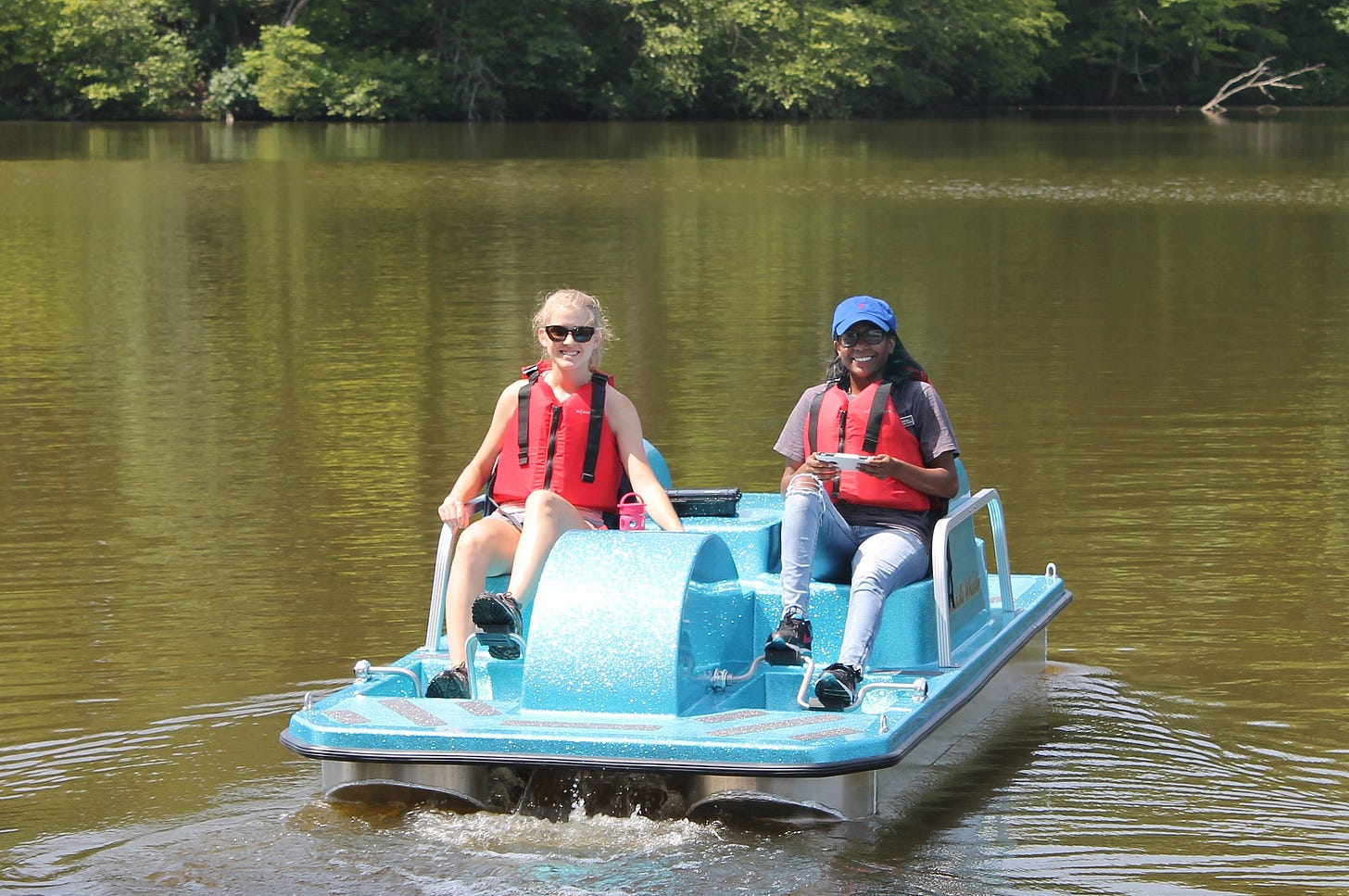
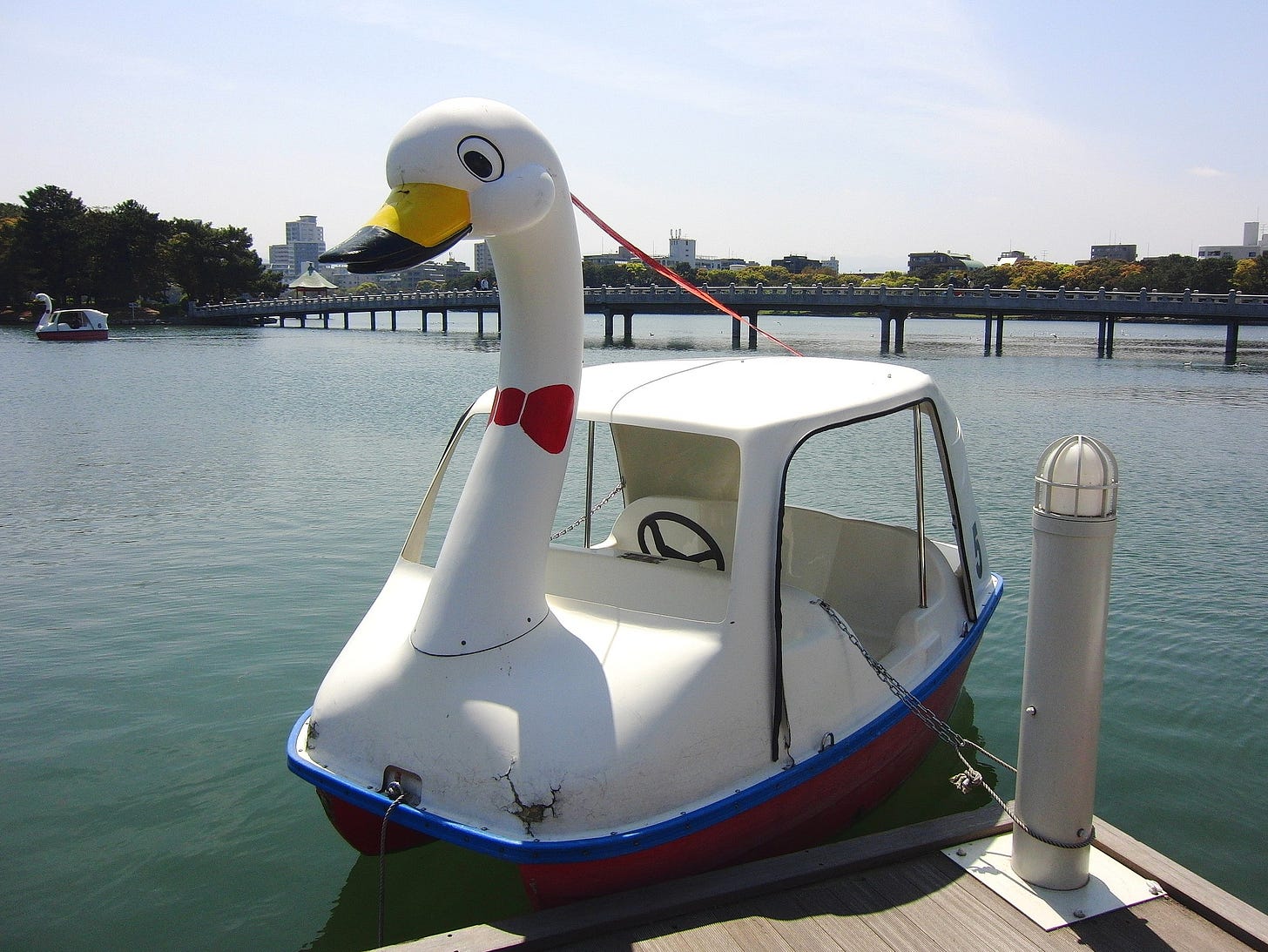


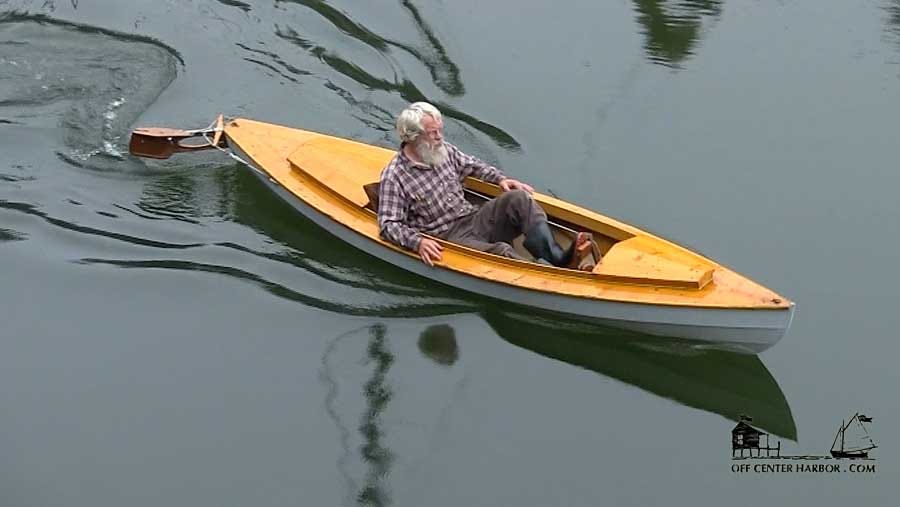
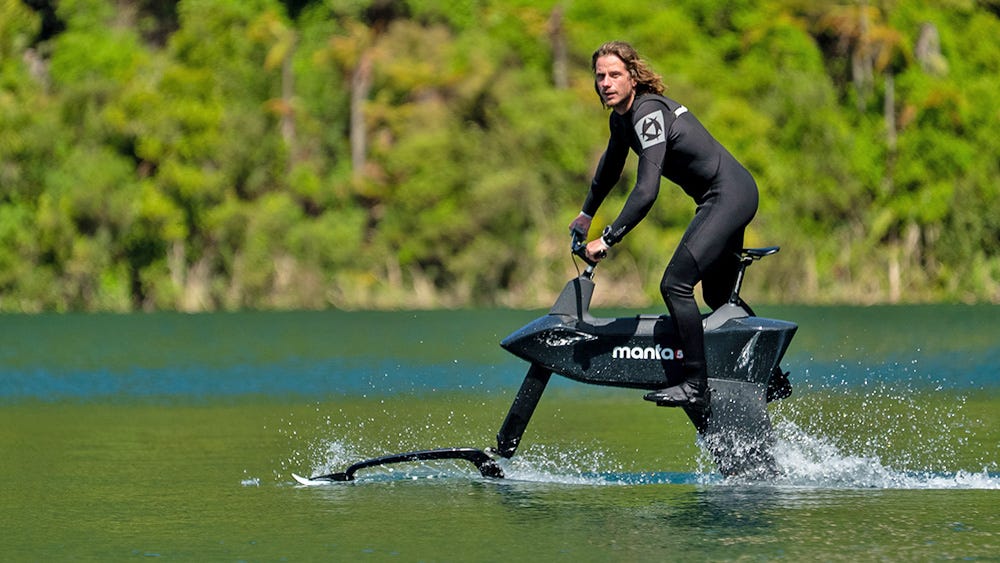
As always, thanks for reading. - Marty



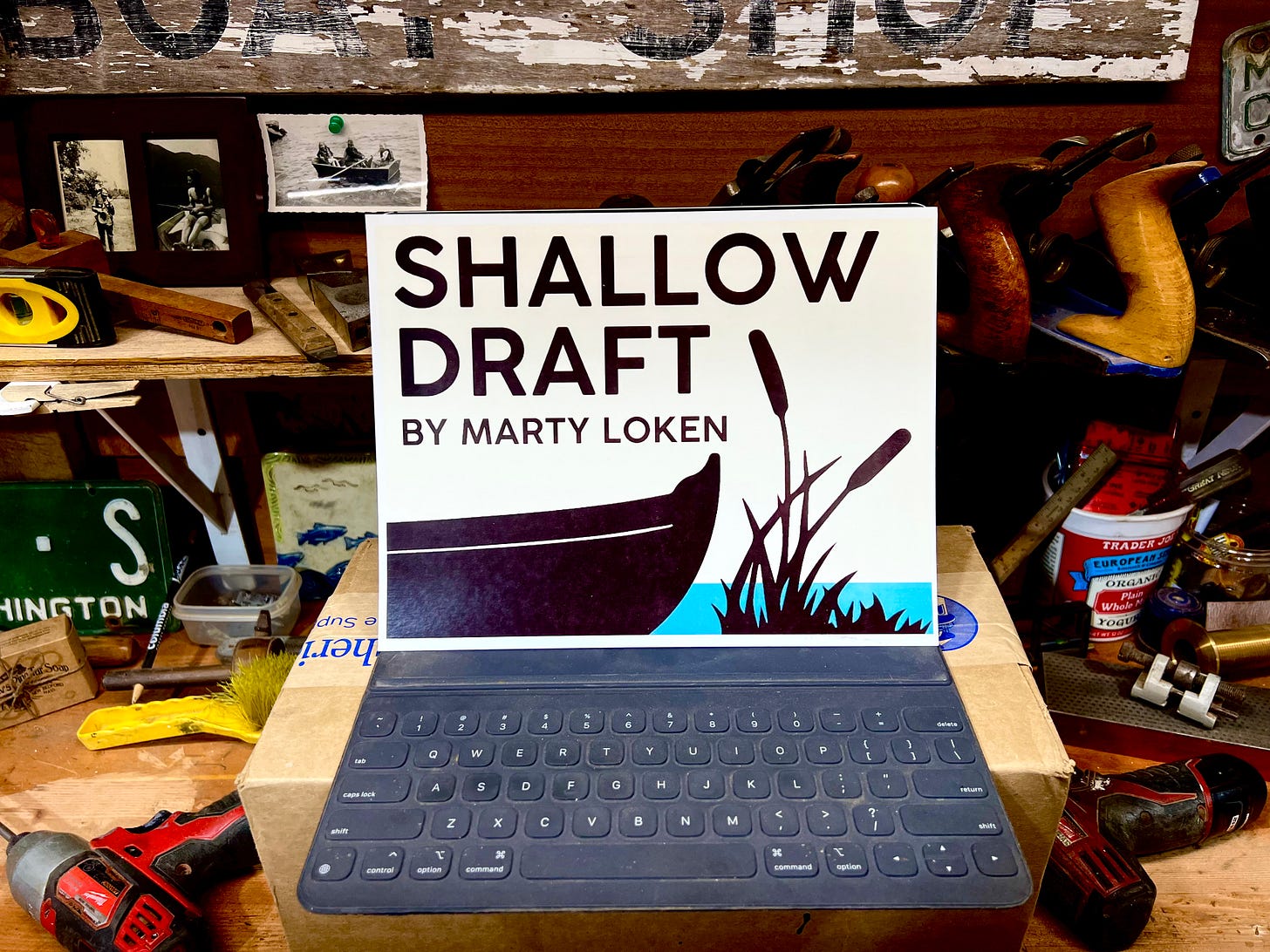


It looks to me that on the late 1800s craft, the frames of the upper round ball floats allow them to swing down even with the main propulsion balls. The ridges on them would then be vertical, like the main balls have and act like keels. The peddler would only get his shoes and lower pants legs wet, if it worked. Interesting machine!
Waterlust Sailing Canoe! Wish we could add photos to our comments.